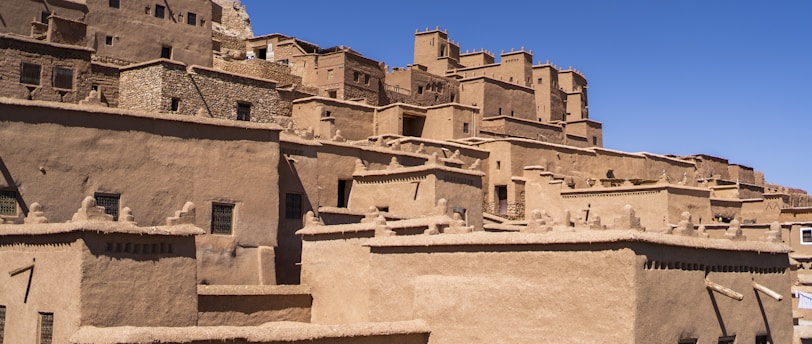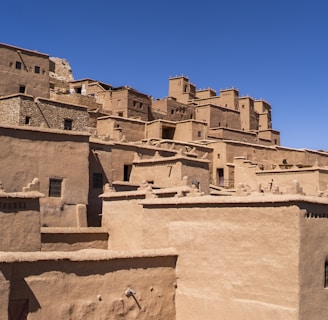Clay palace
Clay Palace, is located in the Algerian desert in a city called Ghardaia. Ghardaïa, chief town of the Mʾzab Oasis, north-central Algeria, lies along the left bank of the Wadi Mzab in the northern Sahara (desert). Founded in the 11th century, it was built around the cave (ghār) reputedly inhabited by the female saint Daïa (the cave is still venerated by Mʾzabite women). Ghardaïa is a fortified town with white and red clay houses that rise in terraces and arcades toward the pyramid-style mosque at its center. It is divided into three walled sectors. At the core is the Mʾzabite section, built around the mosque and an arcaded square. The traditional Jewish quarter, with its many wells and craft shops, lies to the east, and the Medabian quarter is to the northwest. The military compound and hospital are to the south, and the town also has an airport.
AFRICAN HISTORY
deangichukie
11/21/20231 min read


Clay Palace, is located in the Algerian desert in a city called Ghardaia. Ghardaïa, chief town of the Mʾzab Oasis, north-central Algeria, lies along the left bank of the Wadi Mzab in the northern Sahara (desert). Founded in the 11th century, it was built around the cave (ghār) reputedly inhabited by the female saint Daïa (the cave is still venerated by Mʾzabite women). Ghardaïa is a fortified town with white and red clay houses that rise in terraces and arcades toward the pyramid-style mosque at its center. It is divided into three walled sectors. At the core is the Mʾzabite section, built around the mosque and an arcaded square. The traditional Jewish quarter, with its many wells and craft shops, lies to the east, and the Medabian quarter is to the northwest. The military compound and hospital are to the south, and the town also has an airport.
It was built before 1000 years ago and still strong and looks great. Main materials that used to build this wonderful palace are clay, stones and wood. This is due to the fact that in past, they didn't have Air condition neither the electricity to make the house cool during hot weather. Clay resists under high temperature and it has a low thermal conductivity. It’s the best Material to build any building in the Desert.
Its architecture is unique and splendid and its color made it more astonishing. This borrows heavily from the Ottoman empire’s entry into north Africa; In 1518 the Ottoman Empire gained control of Algeria. Under Ottoman rule, a hybrid style developed influenced by traditional Turkish styles, including central-plan mosques and glazed tile panels. Domes of Ottoman influence were introduced into the design of mosques, but minarets generally continued to be built with square shafts instead of round or octagonal ones, thus retaining local tradition, unlike contemporary architecture in Ottoman Tunisia and other Ottoman provinces, where the "pencil"-shaped minaret was a symbol of Ottoman sovereignty
